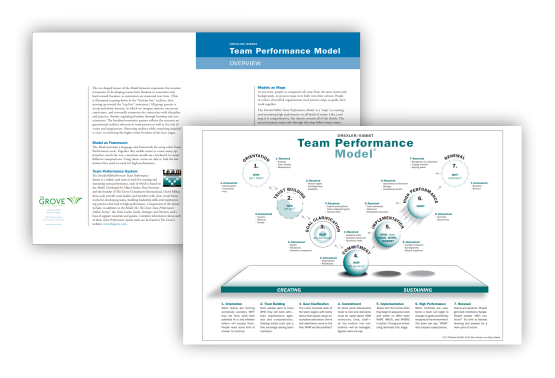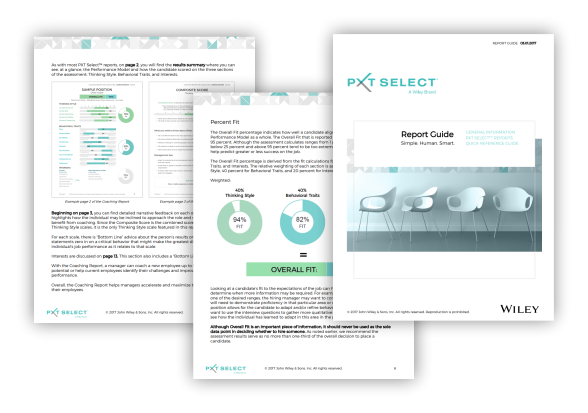Corporate Facilitation
Build and Evaluate Your Team for Optimal Performance
We will work with you to design the team-building package you need.
Team Performance Model
The arc-shaped layout of the Model elements represents the constant movement of developing teams from freedom to constraint and back toward freedom, as constraints are mastered over time.
Program Features
The Team Performance Model emphasizes the dynamic nature of team development, highlighting that teams may cycle through different stages as they encounter new challenges or undergo changes within the team.
Delivery and Key Topics
Key Topics Covered
This course explores the following subjects in depth:
1. Orientation (Why?)
- Forming Stage: Team members are introduced. They learn about the project and their responsibilities. This stage is marked by dependence on leadership for guidance and direction. The focus is on understanding the team’s purpose and the individual roles within the team.
2. Trust Building (Who?)
- Storming Stage: As team members start working together, they test the boundaries of leadership and each other. Trust building is crucial at this stage to overcome conflicts and establish strong interpersonal relationships, ensuring open communication and respect among team members.
3. Goal Clarification (What?)
- Norming Stage: Teams define their goals and establish shared visions and values. This stage emphasizes aligning team members towards common objectives and clarifying individual contributions to the team’s success.
4. Commitment (How?)
- Teams decide on their strategies, processes, and resources required to achieve their goals. Commitment to the team’s strategy and to each other is critical to move forward effectively.
5. Implementation (Who Does What, When, Where?)
- Performing Stage: With clear goals, strategies, and commitments, the team is now ready to execute the plan. Roles and responsibilities are clearly defined, and the team works collaboratively towards achieving the set objectives.
6. High Performance (Wow!)
- A high-performing team operates with a high degree of autonomy, engagement, and efficiency. Team members are deeply committed to the team’s success and can adapt quickly to changes. Innovation, collaboration, and productivity are at their peak.
7. Renewal (Why Continue?)
- Adjourning/Transforming Stage: Teams reflect on their achievements and challenges. They evaluate the need for continued efforts towards current goals or the setting of new objectives. This stage is also about recognizing accomplishments and learning from the team process.
6 Team Conditions
Outlines six critical conditions for understanding and fostering successful teamwork:
Program Features
- Compelling Direction
- Strong Structure
- Supportive Context
- Shared Mindset
- Competent Team Members
- Team Coaching
Delivery and Key Topics
Key Topics Covered
By establishing and nurturing these six team conditions, organizations can create an environment where teams thrive, collaborate effectively, and achieve their goals with greater efficiency and impact.
Compelling Direction: High-performing teams have a clear and compelling purpose or goal that guides their efforts. This direction provides a shared understanding of what the team is working to achieve and why it matters. A compelling direction inspires team members to align their efforts and stay focused on the team’s objectives.
Strong Structure: Effective teams have a clear structure that defines roles, responsibilities, and processes. This structure ensures that team members understand their individual contributions and how they fit into the larger team context. It also provides clarity around decision-making, communication channels, and accountability, facilitating efficient teamwork and collaboration.
Supportive Context: High-performing teams operate within a supportive organizational context that provides resources, information, and opportunities for learning and development. This context enables team members to access the resources they need to perform their roles effectively and to overcome challenges as they arise. Supportive contexts also foster a culture of trust, respect, and psychological safety, where team members feel comfortable taking risks, sharing ideas, and expressing themselves openly.
Shared Mindset: Effective teams share a common mindset or set of values that guide their behavior and interactions. This shared mindset includes beliefs, norms, and expectations that shape how team members work together and approach their tasks. It fosters cohesion, mutual respect, and a sense of collective identity among team members, promoting collaboration and alignment towards common goals.
Competent Team Members: High-performing teams consist of members who possess the skills, knowledge, and abilities necessary to fulfill their roles effectively. Competent team members bring diverse perspectives, expertise, and experiences to the team, enriching discussions and problem-solving processes. They also demonstrate a willingness to learn and adapt, continuously improving their capabilities and contributing to the team’s success.
Team Coaching: Effective teams receive coaching and support from a qualified external facilitator or internal leader who helps them develop and maintain their effectiveness over time. Team coaching involves providing feedback, facilitating discussions, and offering guidance to help teams identify areas for improvement and implement strategies to enhance their performance. It also helps build the team’s capacity for self-reflection, learning, and adaptation, enabling them to navigate challenges and capitalize on opportunities more effectively.
PXT Select HR Solutions - Make Smarter Hiring Decisions
Gain insight into a candidate’s cognitive abilities, behavioral traits, and interests, including tips about the candidate’s potential job fit and relevant job-specific interview questions.
Streamline the hiring process, improve candidate selection accuracy, and enhance employee engagement and performance by providing valuable insights into candidates’ abilities, traits, and fit for specific roles within the organization.
Program Features
- Assessment
- Reports
- Job Matching
- Interview Guides
- Development Resources
How it works
Assessment: PXT Select utilizes a series of assessments to evaluate candidates’ cognitive abilities, behavioral traits, and interests. The assessment includes multiple-choice questions and scenarios designed to measure critical thinking skills, personality traits, and preferences related to work tasks and environments.
Reports: PXT Select generates comprehensive reports that provide insights into candidates’ strengths, areas for development, and potential fit for specific roles within the organization. These reports include detailed descriptions of the candidate’s cognitive abilities, behavioral characteristics, and interests, as well as recommendations for interview questions and strategies to effectively manage and develop the candidate.
Job Matching: PXT Select helps organizations match candidates to specific job roles by comparing their assessment results to predefined job profiles or benchmarks. This allows hiring managers to identify candidates who possess the skills, traits, and interests necessary for success in a particular position.
Interview Guides: PXT Select provides interview guides tailored to each candidate based on their assessment results. These guides offer suggested interview questions and strategies for evaluating the candidate’s fit for the role, allowing hiring managers to conduct more structured and targeted interviews.
Development Resources: PXT Select offers resources and tools to support ongoing development and coaching of employees. These resources may include tips for improving communication, managing conflict, and leveraging strengths in the workplace.
Overall, PXT Select aims to streamline the hiring process, improve candidate selection accuracy, and enhance employee engagement and performance by providing valuable insights into candidates’ abilities, traits, and fit for specific roles within the organization.
Book Your Facilitation Discovery Call
How We Do It
A Paradigm 360° Facilitator will assist your group in planning and conducting meetings, workshops, or other collaborative sessions in order to enhance productivity, communication, and teamwork within the organization.
Meeting Design: Facilitators work with you to design meeting agendas and structures that are tailored to the objectives of the session. They may use various techniques and frameworks to ensure that the meeting is focused, productive, and engaging.
Process Management: Facilitators manage the flow of the meeting, ensuring that discussions stay on track and that all participants have an opportunity to contribute. They may use tools such as timekeeping, ground rules, and visual aids to keep the meeting running smoothly.
Facilitated Discussions: Paradigm 360° Facilitators encourage open and constructive dialogue among participants, helping to generate ideas, explore different perspectives, and reach consensus on key issues. They may use techniques such as brainstorming, group exercises, or structured discussions to facilitate collaboration and problem-solving.
Decision-Making Support: Facilitators help groups make informed decisions by providing relevant information, clarifying options, and guiding the decision-making process. They may use tools such as decision matrices or voting systems to help groups prioritize and evaluate alternatives.
Conflict Resolution: Facilitators help manage conflicts and disagreements that arise during meetings, fostering a positive and respectful environment where differing viewpoints can be addressed constructively. They may use mediation techniques or facilitate discussions to help parties find common ground and reach resolution.
Action Planning: Facilitators assist groups in developing action plans and next steps to implement decisions or recommendations arising from the meeting. They may help identify responsible parties, set timelines, and define measurable outcomes to ensure accountability and progress.
Ready to make a change?
(But not sure how?)
Let's create an environment where your team thrives, collaborates effectively, and achieves their goals with greater efficiency and impact.
Get In Touch
Paradigm 360° is your team of trusted advisors and coaches
Design Your Solution
Discover our suite of programming for a structured and efficient approach
Implementation
Learn, apply and reflect on effective leadership habits that drive results
Solve Real Challenges
Improved capabilities, structures, and behaviors to deliver on your mandate





